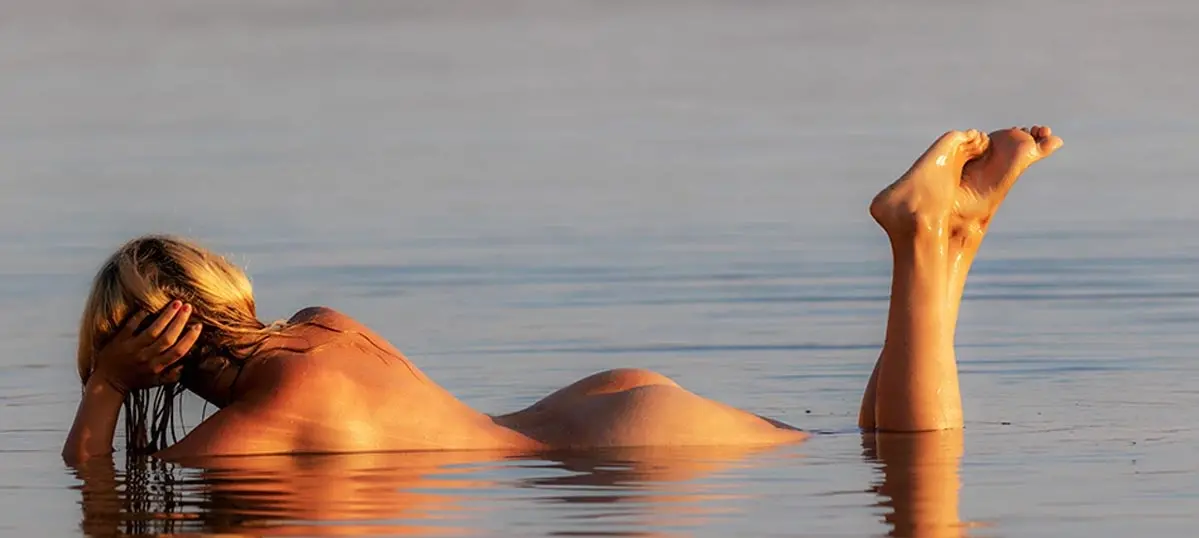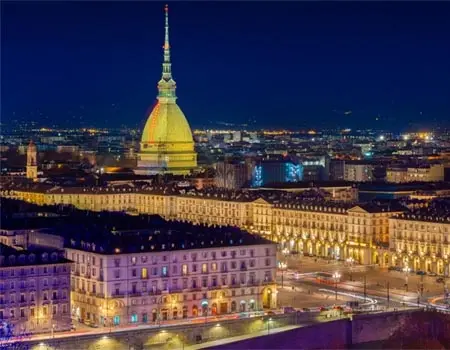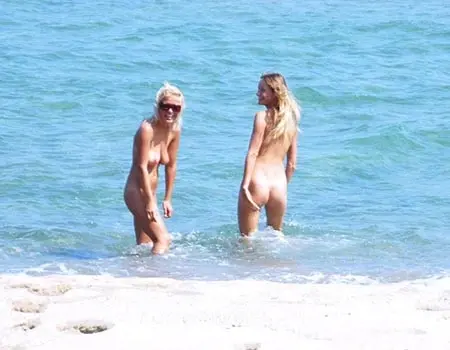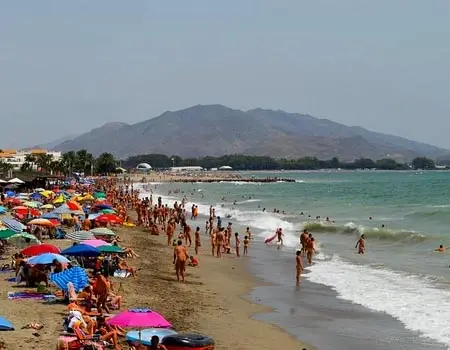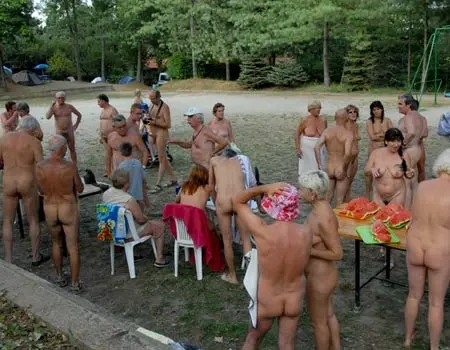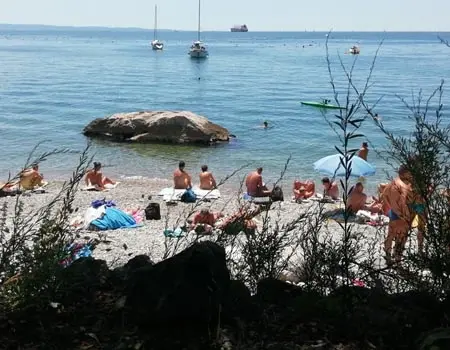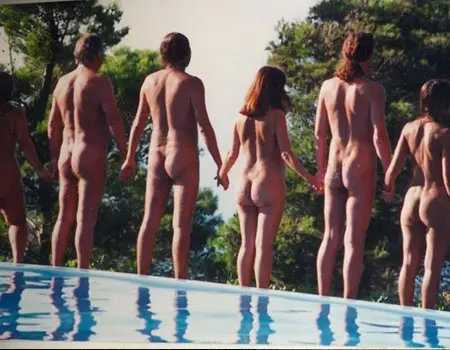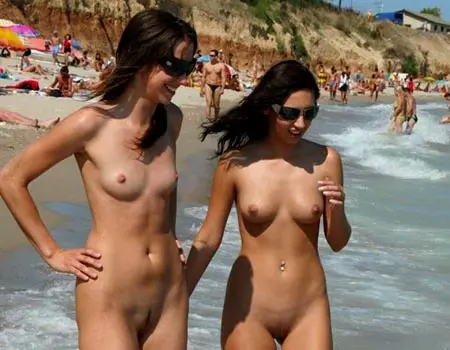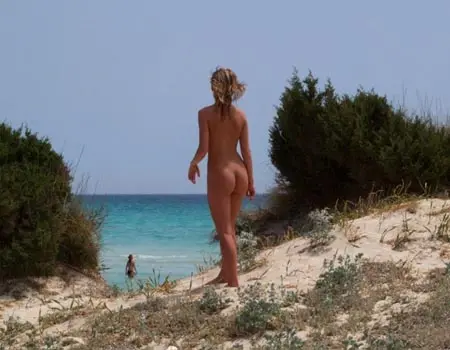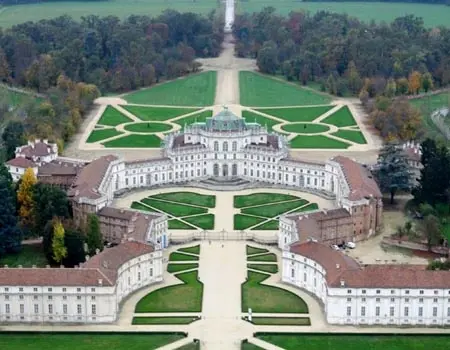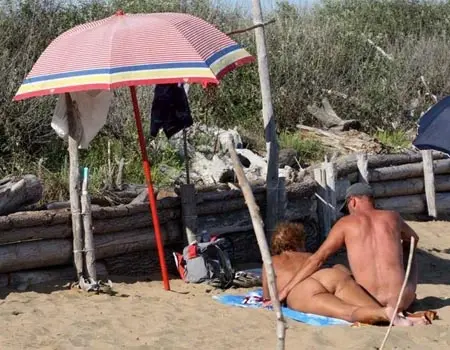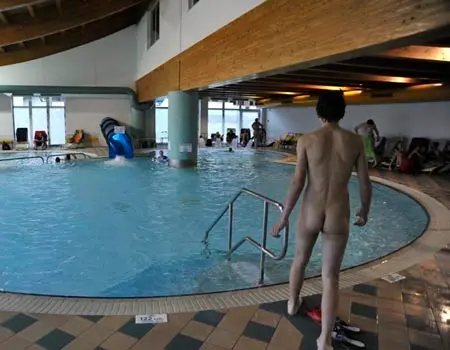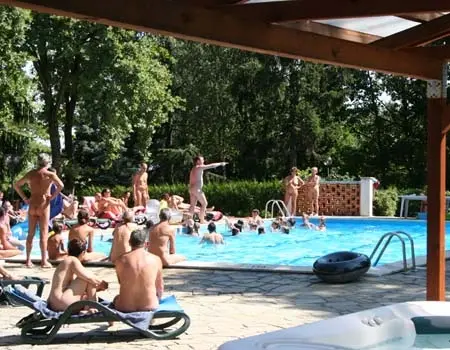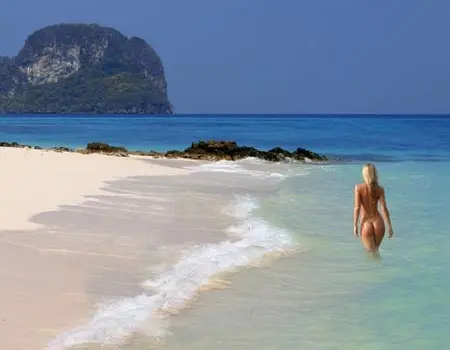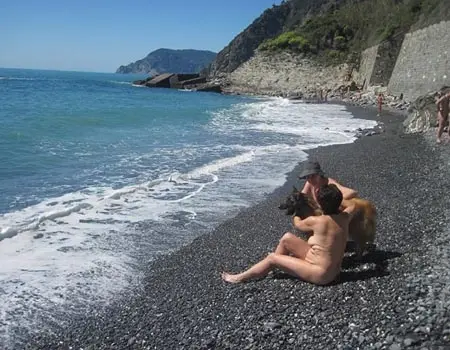The History of Turin
- The Middle AgesThe medieval town During the Middle Ages - Read more...
Torino was a small town divided into four districts, each of which took its name from one of the ancient Roman gates: Porta Castello (Decumana), Porta Segusina (Pretoria), Porta Marmorea e Porta Palatina.
Like other Italian cities at the time, Torino grew in height, increasing the levels of the structures within the Roman era fortifications. The common peoples housing had stone walls, but the roof was generally made of straw, and only after a raging fire that destroyed part of the city in 1448, was a law passed which required them to be made of stone.
Among the few traces that have survived to present is the Romanesque bell tower of St. Andrea (now the Consolata, altered considerably).
The streets of Turin were small and narrow, and they were often developed to the detriment of the traditional square layout of the Roman -castrum-. The current day Via Garibaldi was narrow and had a sewer running along it; the best area was probably located in the vicinity of Via Roma. Many of the buildings we have today were already standing back then. First and foremost, the fortified complex of Porte Palatine; even the cathedral was already present, built in the sixth century. A building not visible today, that used to stand near the present Piazza Cesare Augusto, was the Palace of the Lords, where many sovereigns, locals and other people sojourned, including Henry VII.
Outside the city, near the present day village of Borgo Vittoria and Madonna di Campagna, was the leper colony, although few people in the city were affected by the disease.Gothic domination
With the fall of the Western Roman Empire,Turin also became involved in the struggles for control of Italy. In around 49 the Burgundians led by their king, Gundobado, we're called upon by Odoacer to help them, whereupon they plundered the region. They brought abundant booty back over the Alps consisting of goods and slaves. [Citation needed] When, finally, Theodoric was able to prevail over his opponent, it was the bishop of Turin, Victor, who along with Epiphanius, bishop of Pavia were ordered to go to Lyon to meet with Gundobado and demand the return of those who were were captured and enslaved during the plunder. In addition to this event, we know very little of what happened to the city during the Dominion of the Goths, except for the names of some bishops who succeeded each other in leading the diocese: Tigridia around 501, Rufo from 550 - 560 and Ursicino from 562- 609.
Ursicino, who was a spectator of the Lombard conquest, unsuccessfully opposed the decision of the Frankish king of Bourgogne, Gontrad, who had occupied the valleys of Susa and Aosta as far as the -enclosures- [4], to detach Maurienne from the diocese of Turin. The Lombard duchy In 569 the city was occupied by the Lombards that they put it at the head of one of the duchies on the border with the lands of the Franks. Most likely during that time some of the city structures are transformed into fortified buildings . In 590 the Duke of Turin, Agilulfo, married Teodolinda who was the widow of King Autari, and the following year he was recognized as king by the other Lombard dukes.
Agilulfo set up his own Palace (Curtis ducis) in the buildings still stand in the current day Piazza IV Marzo which may have corresponded to the the ancient seat of the Roman magistrates. Agilulfo was of the Aryan religion but was influenced by his Catholic wife who tried to start the conversion of his people to the Church of Rome. Upon her wish, St. John the Baptist was proclaimed patron of the city and it may be that the church was also consecrated to him. date now houses the city cathedral which previously housed the temple dedicated to the Turin martyrs Solutore, Avventore and Ottavio. Another Lombard Duke of Turin, who later ascended to the throne of Pavia, was Arioaldo. After him came a a phase of continuous fighting in which the rule of the duc","The domination of the Franks and the Holy Roman Empire
In 773 Charlemagne, having defeated the Lombards, entered Turin, which did resist, and instated his Comital representatives in the city. This made the city center a -free- county free having the same territorial expanse as the Lombard duchy. Some documents, primarily arbitrations of disputes concerning territorial or individual rights, list the names of some counts of the city.
In 818 by order of Louis the Pious, Claudius became bishop of Turin and distinguished himself among the iconoclasts in the dispute over the question that pervaded the Church of Rome. Among the counts who governed Turin in those years was also Ugo di Spoleto in 889. In 940 the Count Arduino il Glabro was invested the title of Count of Turin by Hugh of Provence, crowned King of Italy, .
A few years later Berengar II snatched the throne from Hugh, he put Arduino at the head of the newly formed Marquisate? of Turin, a feudal situation that joined, in addition to Turin, several free committees: Asti, Alba, Albentimillio (Ventimiglia) e The new feudal setup did not keep the city safe from the dangers posed by the Hungarians? and Saracens, according to a Hungarian chronicler who reports that in 954 both Susa and Turin were sacked by the Hungarians. In the following years the Saracens settled in Frassineto, on the Cote d'Azur to ravage the lands of the Turinese Marq, forcing even the monks of the Novalesa Abbey to abandon it and seek refuge first in Turin and then in Bremen.
Main change in construction, in Turin, associated with the establishment of the brand was the transformation of the Porta Decumana (port Susa) in the castle, where Arduinic Marquises resided. Arduino was succeeded by his son Mangifredo who passed his title to Olderico Manfredi, his son in around 1000. in 1035 Olderico Manfredi died leaving only three daughters: the eldest was Adelaide, who became the de facto heir of the Turin marquisate. Shortly after her father's death Adelaide married Hermann of Swabia, the stepson of the Emperor Conrad the Salic. Herman, however, died in 1038 and in 1042 Adelaide married Enrico del Monferrato. Nor did this marriage last long, as Henry died, most likely in 1045. Adelaide's new consort was Oddone, the cadet son of the first Count of Maurienne, Humbert, nicknamed Biancamano, a native of Burgundy. From this marriage sprang the interest and the influence of the House of Savoy in Torino.")"
VALUES ("ENG","2011","","49","January - March","Taboo - Nudity","","Some time ago we saw a TV documentary titled -Taboo - Nudity.- Apart from some gibberish and inconsistencies in the program, and things that have nothing to do with nudity, we must say we were impressed by some aspects of the kind of nudism practiced in the United States.
Americans, as everyone knows, are very pragmatic and consequently end up oversimplifying issues. They do it for everything, and they do with naturism. They simply refer to naturism as nudism (which is what they want it to mean) while ignoring that this term was abandoned by Europeans not only for reasons of expediency, but for all the implications of the term, i.e. anthropological, philosophical, ethical, social, etc. in the broadest sense.
Nevertheless, we were impressed by some aspects of American nudism and the religious aspect that distinguishes certain groups of nudists in the great mosaic of the myriad American States. Similarly we were impressed by some aspects of Australian nudism when combined with esoteric cults, such as witchcraft, which almost seem like a naturist heresy. In the introduction to the documentary, however, it was stated right from the start that in Western society the human body in its natural state, i.e. naked, is a controversial topic. Then it added that for some people, removing their clothes is an act of liberation, an innocent return to nature. While for others, to show their naked body in public would be unthinkable, considering such an act simply indecent. For still others, not only would it be indecent, but even outrageous.
All of this is right: we would also like to note that, according to the naturist philosophy, removing one’s clothes also means recovering one’s identity. The documentary went on to say that there are people, however, who go beyond merely embracing their nakedness. On the contrary, they go so far as to consider it a cult, as in Australia and England. Yet in the eyes of those do not really know our philosophy, it might seem that nudity is a -cult-.
But we would like to clarify and reiterate that nudity is the basic principle of naturism, without which it would be pointless. Considering nakedness a -cult-, the documentary went on to say, means recovering ancient pagan rituals that are celebrated in the nude, so there is nothing standing between the devotee and the universe - - the individual connects to the universal energy. We have nothing to detract from the fact that people get naked to connect with universal energy - if that is possible - and that in order to do it they dust off a few innocent pagan rituals, though we dare not think of the bloody rituals that have fortunately remained in the remote past. We only reject that witchcraft should be a part of it because it has nothing to do with naturist nudism.
The documentary then lamented the fact that the people in Australia and England who have revived ancient pagan rituals and witchcraft are not considered ordinary people. On this point we take exception only to the fact that, while it is true that such people should not be considered normal, it is not because they practice pagan rituals naked, but simply because they believe in witchcraft, and we dare not think they still believe witches can fly on brooms.
Paganism is one of the oldest religions, yet it is the most misunderstood. It seeks order and balance, as explained in the documentary: instead of a supreme God, pagans worship nature and archaic divinities: everything comes from nature and to nature it must return. We have no objections about the concepts of these neo-pagans regarding nature. We only opine that to seek -order, balance, and harmony- all you need is the naturist philosophy and not excuses made up to justify certain behaviors. Sociology says that this new essentially pagan form of worship with an Anglo-Saxon matrix, a kind of -naturist- religion, which celebrates the forces of nature in a state of nudity, has been spreading in the shadows of a society victimized by the","Christianity, said the documentary, has influenced and conditioned the relationship with the nudity in many cultures. Its message has always been simple and unequivocal: nudity in public leads to lust and licentiousness while clothes keep temptation in check. Nevertheless in the United States, precisely in Westfield, Vermont, there is a group of nudists who believe in the Christian faith. The leader of this group holds Bible reading sessions in his home and clothes are optional.
This group sees the episode of Adam and Eve (who became self-consciousness after eating the forbidden fruit) differently than the Church: God made us in His image and likeness, so considering a naked person obscene is like saying God Himself is indecent. On this point we do not object at all because if we did, we would have to discuss religious matters and we do not claim to know such matters. A believer, however, cannot help but agree on the above assertion.
The documentary delved further into the religious issue by interviewing some Christian American nudists: -To live naked in private, at home, is one thing,- they said. -But to live naked in public is another matter- (this is absolutely true and naturism is well aware of it, otherwise there would be no repression). However, beyond this obvious statement, there are those who go beyond the simple practice of nudity in spite of the entrenched taboo. In the United States, this time in Virginia, there is another group of Christian nudists who go to church services naked; they pray together naked and go to weddings and funerals naked.
They do so, they say, because the naked body exists even when we keep it hidden behind clothes:-God made us this way, fat or thin, tall or short, healthy or sick, good or bad. Human beings, despite aesthetic diversity, are a beautiful creation, a wonderful machine that never ceases to amaze us“. For many practicing Catholics, these Christian nudists added, this collective nudity in church is an image that defiles the sanctity of worship, while for others the ritual is almost a blasphemy. “When we pray to God, the Christian nudists reply, clothing is irrelevant, in fact it is counterproductive because praying dressed removes the principle of humility which informs Christianity”.
Here again we do not feel compelled to intervene because this argument is flawless, from the point of view of the writer who is not a believer but saw the interest in the celebration of Mass at the 32nd World Naturist Congress held in Calabria in September last year at the Pizzo Greco Campground. According to the documentary -The statistics say that 65% of Christians are nudists. In the U.S. alone there are 50,000 nudists, of whom 32,000 are Christians, but few of them practice nudity in church though the Bible never says nudity is a sin. In the last century this was the controversy that divided religious persons from nudists. “Initially the Christian tradition had associated clothes with vanity, frivolity and sin.- Even on this point, for the reasons stated above, we have no objections.
We nevertheless think that -true- Christians should recognize the validity of these claims. Another American nudist center, -White Tail Park Resort-, has over five hundred nudist members: -To be naked,- they say -is not just a matter of sex or exhibitionism, but freedom and acceptance of ourselves as we are and others as they are. For us, nudism is not a religious choice but the choice of a lifestyle that is free, less hypocritical, where two fundamental concepts are freedom and acceptance of oneself.- These nudists openly criticize the position of the traditional Christians who say that showing one's naked body, especially to people of the opposite sex violates a moral code. According to this moral code, nudity and sex are inseparable. - Turin and the Duchy of Savoy In 1418 Ludovico, the last descendant of the Savoy-Acaia line, died without descendants. - Read more...
Consequently Turin and Piedmont fell back under the direct rule of Amadeus VIII, who in 1416 had obtained permission from the Emperor Sigismund to transform his count title into a Duchy.
In 1424 the Duke of Savoy founded the Principality of Piedmont and since then the title has been conferred upon the ducal heir. Then a work of administrative unification began involving the various parts of the state with the establishment of two Ducal councils, one in Savoy and one in Piedmont or, according to the name of the period, an Oltremontano Council and a Cismontano Council.
With regard to 1453, during the reign of Duke Ludovico there was a noteworthy event traditionally known as the Eucharistic Miracle of Turin. In commemoration of it a small chapel was erected at the place where the miracle had occurred and then it was made into the church called Corpus Domini. In 1472 the first printing shop was opened in Turin and in 1495 the first text in the vernacular was published: Fior di vita.
The most important Renaissance building in Turin is the cathedral, whose construction began in 1490 and ended in 1498. The death in 1472 of the Duke Amedeo IX, who left an heir, Filiberto I, a minor, opened a period of strife and instability in the duchy, an instability that also became connected to the friction between the Piedmontese and Savoyard component.
The dynastic struggles came to an end in 1496 when Philippe de Bresse, nicknamed lackland became Duke, though briefly. The French occupation The sixteenth century opened with the clash between the French imperialism of Francis I and the empire of Charles V. The conflict also involved Piedmont and Turin.
In an attempt to avoid the worst, for years the Dukes of Savoy oscillated between the two fields without being able to prevent their lands from being crossed by the armies of the two factions.
In 1510 the situation was also aggravated by an epidemic that broke out in the city and further impoverished the population in 1515 raising the city to the honor of being an Archbishop See was not sufficient to revive its fortunes, an act that came after protests over the creation of the Diocese of Saluzzo that led to detachment from the Turin see of the lands of the Marquis. Belatedly, realizing the vulnerability of Turin, Duke Charles II ordered a strengthening of the defensive wall, which was, in fact, still the Roman wall.","The erection of four modern bastions, that is able to resist artillery fire, at the corners of the city plus one more, called the barbican/rivellino? placed to protect the castle. In 1536 King Francis I ordered the occupation of the duchy of Savoy and on 3 April the French troops entered Turin, abandoned by Duke on March 27, and brought with them the artillery of the city and met with no resistance. Among the first actions of the occupants was to fortify the city. The bastions built earlier were completed and connected it each other by a new defensive curtain up against the old Roman walls.
To allow the shooting of the guns placed on the ramparts all buildings outside the walls surrounding the city were demolished, and so disappeared the villages of Dora, Po and Porta Segusina, the ancient abbey of San Solutore and even the last remains of the Roman amphitheater.
New city walls were mentioned in the work Gargantua and Pantagruel: In order to integrate the new territories in the kingdom of France, a parliament similar to those found in other French provinces was established in 1539, replacing the ducal council. However, the new owners were not seen in a positive way because of the heavy tax exactions were imposed to finance the war and even actions such as closing the University. After years of ups and downs, in 1557, the French were defeated at the Battle of San Quentin, by Emanuele Filiberto, the son of Charles II. Then with the Peace Treaty of Cateau-Cambrésis they had to return in 1559 Turin, Savoy and Piedmont to the Savoyard Duke. Turin, capital of the duchy Even before repossessing the city in 1561, Emanuele Filiberto made two “revolutionary- decisions: he decided to transfer the capital of his land from Chambery, in Savoy, to Turin and ordered that all official acts of the duchy were written in Italian .
Both these decisions were taken to remedy the military, political and social vulnerability of the capital being too close to the kingdom of France. Emanuele Filiberto realized that the only hope of expanding his dominions were to head toward Italy.
The works began on 7 February 1563 and for many years consumed all the energy of the city, to the point that a ducal edict was issued that prohibited any other construction in the meantime.
Work began February 7, 1563 and for some years absorbed all the energy of the city to the point that a ducal edict forbade any other building in the meantime. The Duke's interest in defending the city was accompanied by numerous other initiatives aimed at making it more lavish as his capital. Considering the old fortified house of Acaia no longer suitable as a residence, he order the start of construction of a building in the area behind the cathedral, next to the bishop's palace which was being used as a temporary residence. In and around the city several country residences were built or modernized for the leisure of the Duke, his court and guests.
In addition to the castles of Lucento and Rivoli, Emanuele Filiberto also ordered the purchase of the Birago family villa located near the banks of the Po. Then he had it turned into a castle surrounded by a park (this was the origin of the Parco del Valentino and the castle of the same name).
In 1568, with the purchase of several hundred -giornate- of land, began the development of the country residence later known as the -Regio Parco- [Royal Park] (later devastated during the siege of Turin in 1706, and transformed into Manifattura Tabacchi [tobacco factory], while the area of the park would be used, in part, to build the Main Cemetery of Turin). In 1566 the town obtained the return of Studio that the Duke had originally granted to the town of Mondovi.
Then in 1578 Turin was the destination for massive pilgrimages following the transfer of the Shroud at the behest of Emanuele Filiberto as a favor to Cardinal Carlo Borromeo, who had expressed the desire to venerate the relic from Chambery. The destruction of villages outs")" - PRINCIPISTS AND MADAMISTS In 1630 the death of the duke started a new phase of instability in the leadership of the state. - Read more...
That, along with and a violent plague, put a heavy damper on the development of the city that started to be abandoned due to disease and the devastation of civil war.
The plague
The plague epidemic that broke out in Turin in 1630 was far worse than the one that had hit the city in 1599; during the worst days, according to the chroniclers, there were as many as 150-200 deaths per day. The dying, for whom there was no effective treatment, as was customary at that time, were housed in leper infirmaries beyond the city walls, in the current Borgo Dora and Madonna di Campagna. The city quickly emptied. Those who were able, i.e. the nobles and their servants, found refuge in the estates outside Turin, where the risk of infection was not so high. The court, meanwhile, settled in Cherasco.
There were only eleven thousand people left in the city, of whom three thousand were mowed down by the disease. The capital was also guarded by the mayor, Giovanni Francesco Bellezia, who rescued the population: the town commemorated him by naming one of the oldest streets in the so-called Roman Quarter after him.
The Civil War
In 1637 Duke Vittorio Amedeo I died of malarial fevers in Vercelli, leaving the kingdom to his son Francesco Giacinto, who was only a few years old. The regency was taken by Maria Cristina of Bourbon-France, wife of the late Duke and sister of the King of France. She was challenged by the brothers of the late duke: princes Maurizio and Tommaso.
The princes, fearing a further political shift of the duchy under the influence of the French, asked for the establishment of a regency council. Their proposal was rejected by the regent, who was referred to then as Madame Royale. In short, the clash within the family of Savoy became a clash between France and Spain for control of Savoy and Piedmont. The confrontation quickly became military and on July 27, 1639 the princes, supported by troops in the service of Spain, conquered Turin but were unable to enter the citadel which was guarded by French troops.
From the citadel they fired on the city, which suffered substantial damage.
They bombed the town from the ramparts until May 1640 a French army besieged the city and was in turned threatened by the Spanish Army. This state of siege is mentioned twice in the novel by Victor Hugo', Notre-Dame de Paris: -... and Quasimodo defended both besiegers and besieged, who were in the singular situation that later Henri d'Harcourt experienced (et idem Taurinum obsessor obsessus as stated in his epitaph), during the famous siege of Turin in 1640, between Prince Thomas of Savoy, whom he was besieging and the Marquis Leganez who was blocking him. Book X, Chapter VII.-
In September of that year the situation was resolved: the princes and Maurizio and Tommaso left the city with their troops and in 1642 a definitive agreement was reached between the disputing parties, an agreement that saw the regent, Madame Royal, firmly in power, position she maintained until her death even after the Duke Carlo Emanuele II, who succeeded his brother who died at an early age, came to maturity.The city expands
Despite the depopulation caused by the plague, the damage caused by civil war and the constant state of war that characterized the second half of the seventeenth century, Turin's population grew from 36,649 inhabitants in 1631 to 43,866 in 1702. The imposing fortification works and the erection by the nobility of palaces and residences in the city, involving the influx of generic laborers, diggers, masons, carpenters, as well as more specialized workers, such as, decorators and upholsterers. Among the most significant buildings produced in the second half of the seventeenth century: the new Palazzo Ducale (architect Amedeo di Castellamonte 1658), the Chapel of the Shroud (architect Guarini, 1666), Palazzo Carignano (Guarini 1680), Palazzo Barolo (Baroncelli), the new City Hall (Lanfranchi), the Arsenal (Amedeo di Castellamonte), reconstruction of the wing connecting the Ducal Palace to the castle (the wing was destroyed by fire in 1657) and the Royal Gardens (1697). The surroundings of the city also saw the construction or restoration, of new villas and palaces; the Castello del Valentino was completed in 1660 in the form it still maintains and Amedeo di Castellamonte began the work of the Palace of Venaria in 1661. To overcome the need for building space, the Roman and Filibertine walls were torn down along with Porta Nuova itself. All these wall had been erected in 1620 and they still divided the old city from the modern city (first expansion); now they began to plan a second extension of the city walls. On October 23, 1673 Duke Carlo Emanuele II laid the first stone of the second extension to the city, which this time included within the Turin walls the area toward the river: not surprisingly, the main artery of the new section, called Contrada di Po, was christened Via di Po. The boundaries of the new area running from Via Accademia delle Scienze to Via San Francesco da Paola, then touched the current Piazza Cavour, Via Maria Vittoria, Piazza Vittorio Veneto, and finally reached the Royal Gardens.
The main square of the Palazzo Carignano, designed by Guarino, is one of the most famous monuments of baroque Turin the History of Turin La Royal Palace of Venaria new extension was named after Carlo Emanuele II. Between 1660 and 1682 at the behest of the Duke the Theatrum Statuum Sabaudiae was built in order to preserve and show the cities and monuments of Savoy and Piedmont (a precious colored copy of the work is preserved in the Royal Library). Within the new extension between the streets of San Filippo (now Via Maria Vittoria), were the stables of the Prince of Carignano (via Bogino) via d'Angennes (via Principe Amedeo) and Via San Francesco da Paola, the Jewish ghetto that was established in 1679. FROM THE CAPITAL OF A DUKEDOM TO THE CAPITAL OF A KINGDOM- - - - - - - The siege of 1706 At the beginning of the eighteenth century, during the War of Spanish Succession, Turin was repeatedly threatened by the French army who, after various vicissitudes, was bringing disruptions to the Savoyard Piedmont. In 1705 the siege was avoided due to lack of French reinforcements, but the following year, the city was surrounded and subjected to the siege for 117 days. The citadel ordered to be built by Duke Iron Head [Testa di Ferro] resisted heroically, even with the help of the now well know countermine tunnels and the sacrifice of men such as Pietro Micca, whose death stopped the advance of enemy troops in the tunnels of the Crescent. Finally liberated from the Austro-Piedmontese forces headed by Vittorio Amedeo II of Savoy and his cousin Eugene, the city became, after the Treaty of Utrecht, the capital of the Kingdom of Sicily. Later it was traded/exchanged?, in accordance with the Treaty of London of 1718, with the Kingdom of Sardinia. Moreover, in the same year, to thank the Virgin for the vow made and fulfilled, the king built on a hill overlooking the city, a church that was visible from every corner of Turin.
